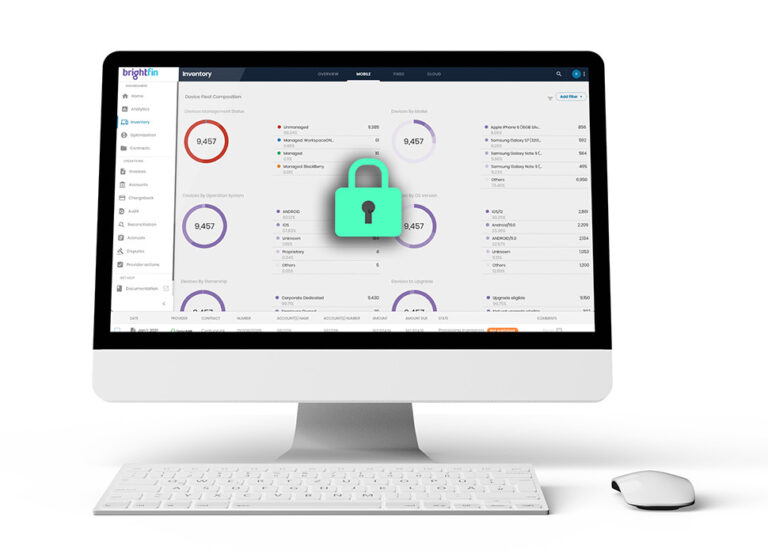It’s no secret that cloud solutions continue to drive innovation and ever-increasing budgets. The vast majority of organizations will use cloud services with more and more IT budget dedicated to cloud technology by 2023. The market for cloud services has grown rapidly in recent years and is expected to continue growing at a fast pace. This trend is being driven by increasing adoption and usage among organizations worldwide.
IT spending continues to grow.
Worldwide IT spending is projected to total $4.6 trillion in 2023, an increase of 5.1% from 2022, according to the latest forecast by Gartner. Demand for IT in 2023 is expected to be strong as enterprises push forward with digital business initiatives in response to economic turmoil. The majority of this growth is driven by an increasing number and size of cloud-based applications being purchased by companies.
This increase in cloud adoption is pushing enterprise organizations to evaluate their current level of security and compliance capabilities within their IT environments as well as determine how best to manage these risks moving forward. Attaining a high degree of visibility into your environment allows you more control over your risk posture and helps ensure that you’re staying compliant with industry regulations such as GDPR or HIPAA/HITECH requirements.
The usage of global public cloud services correlates with the rise in remote working.
The forecast on global public cloud services correlates with the rise in remote working. Post pandemic, almost half of IT organizations will have a workforce that is 50% or more distributed (meaning people who work from locations outside their office).
Cloud computing makes it possible for companies to have their employees work from home or other locations and use the same software as their colleagues in the office. Cloud software provides a number of benefits including increased productivity and efficiency, reduced costs and better access for all users across an organization.
Gartner expects cloud adoption to accelerate as organizations move past initial deployments.
Cloud adoption is not a one-time event and will continue to increase as new technologies are introduced. Organizations will move past initial deployments and into production environments, which will drive greater cloud adoption in the years ahead. Cloud usage is expected to grow at an annual rate of 15% through 2022, increasing from $240 billion in 2021 to nearly $660 billion by end of 2022; this growth includes both public cloud services and private clouds that use managed services or outsourcing models.
Key applications driving cloud adoption are related to understanding the customer.
The most significant applications driving cloud adoption are related to understanding the customer. This includes customer relationship management (CRM), customer experience management (CEM), and customer service management (CSM).
Cloud platforms have become ubiquitous in many enterprises as they offer flexibility and scalability while reducing cost and complexity. Enterprises are increasingly adopting cloud computing services because of their ability to meet changing business needs without upfront capital expenditures or long-term commitments.
Software-as-a-service (SaaS) will be one of the largest segments in 2023.
Software-as-a-Service (SaaS) will be one of the largest segments in 2023. SaaS is a cloud-based application that is accessed over the internet. It’s typically hosted in the cloud and accessed through a web browser. Many businesses rely heavily on SaaS, as it allows them to access their applications and data from anywhere at any time—without having to install, configure or maintain any hardware onsite.
It can be considered a subset of cloud computing: both terms refer to accessing software over the internet instead of installing it on personal computers or servers located within your office premises. Application-hosting and vendor-specific offerings are expected to make up a relatively small portion of the enterprise cloud market.
Cloud computing is an umbrella term for a wide range of technologies that provide access to shared pools of configurable resources such as cloud servers, storage, and networked services. Cloud-based solutions can be deployed on-premises or in geographically dispersed data centers operated by third parties who specialize in cloud computing.
The rapid adoption of public cloud services has resulted in a shift from the traditional model where IT organizations owned, managed and maintained computing infrastructure to one where businesses rent access from service providers with which they have little interaction. Because many organizations continue to operate their own corporate data centers (or utilize third-party hosting facilities), there are also hybrid models that combine both private and public cloud services within an enterprise’s IT portfolio.
Worldwide enterprise spending on cloud technology is predicted to double between 2020 and 2023, despite fears of a recession.
Despite fears of a recession, worldwide enterprise spending on cloud technology is predicted to double between 2020 and 2023. In 2020, enterprise cloud spending was $42.3 billion; it’s expected to rise to $86.2 billion by 2023.
The industry’s growth is driven by new technologies and increased spending on managed services. As the world becomes increasingly digital and businesses become more reliant on technology, enterprises are expected to increasingly embrace cloud services. This will lead to significant spending increases across all regions over the next five years as organizations adopt cloud computing technologies at an accelerated pace.
Want to bring all your cloud accounts into one platform?
brightfin has out-of-the-box integrations with Amazon Web Services, Microsoft Azure, and Google Cloud. With unified dashboards and analytics tools, you can compare usage, costs, and charges across vendors and drill down for more detailed granularity.




